Just grabbed a subscription to Brand New to keep it afloat. I’ve probably read dozens of their logo analyses over the years, and they’re always thoughtful visual exercises.
➔ Perlstein’s Fourth volume on the rise of the US right
Like trying to keep up with American politics in any election year, reading Perlstein can be like trying to drink from a firehose. There’s something Melvillean about the sheer scale of the work, four leviathans to make up a whole.
Chip Butties
Really fascinating to come upon such a strange delicacy in the UK.
Baffling. But worth creating, I’m sure.
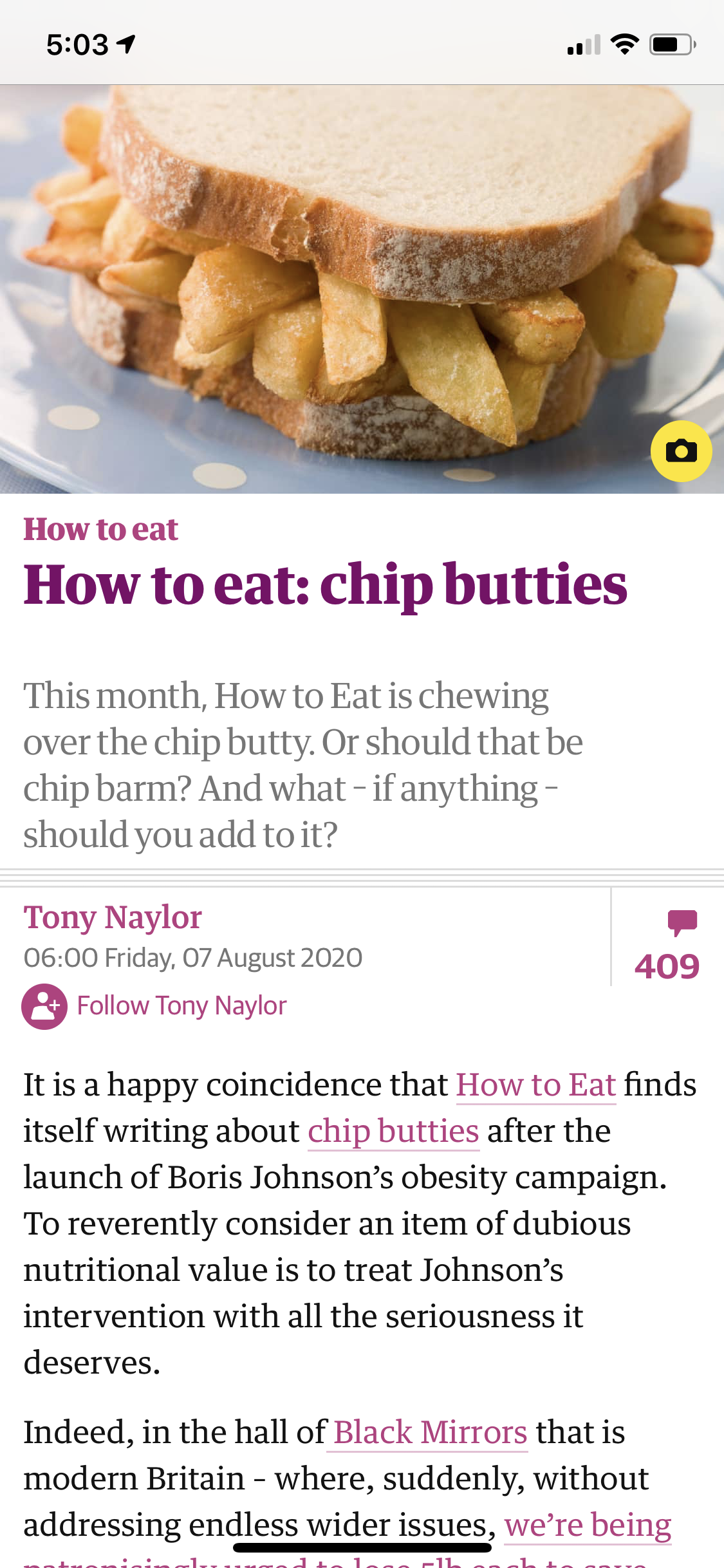
Great read from Current Affairs found by Gruber (via Kottke – hah, love how this stuff gets around) earlier today that I am compelled to add to, as it hits an important beat on my radar of journalism.
I wrote more commentary here.
Journalism & Paywalls
Great read from Current Affairs linked to by Gruber (via Kottke -- love how this stuff gets around) earlier today that I am compelled to add to, as it hits an important beat on my radar of journalism.
The gist of the article is that quality, integrity-based journalism exists, it's available, but there's often a paywall or fee to access it. Other sites, like Fox News, Breitbart, and the Daily Wire are free, but spin significant misinformation and second-rate journalism or news curation.
This is, at its heart, a difficult problem to solve, especially given the Herculean undertaking publishers and journalists are going through in attempting to stay afloat financially -- especially at the local level. There is no easy answer here. Major curators with native apps built-in, like Apple News and Google News, do an important job of bringing a variety of news sources together to cover breaking news, topical news, etc., but also point to articles that require subscriptions or another layer to the app itself (like Apple News+).
There are some larger issues at play here, though, beyond the free vs. paid dilemma:
- You could make a convincing argument that most people nowadays do not read full-length articles and skim headlines or images as representations of the “news”, and that paywalls aren’t as important in these contexts. Sure, free news does a great job of capturing that vibe anyways since the content itself is fairly vapid.
- Those who believe in the institutional importance of journalism, funding well-sourced and researched reports, and keeping companies and government in check at all levels of geography probably pay for news. Others who believe the media is biased, fake, misleading, or have become disillusioned with the matters covered have resorted to simply getting their fix elsewhere (radio and TV), and usually from fewer sources. (And yes, there’s a middle ground here, but this is the spectrum.)
- TV news. Instagram “news”. Facebook “news”. These visual-based mediums continue to be problematic: they are much more bias-driven in messaging than reading an audio-less, visual-less (aside from photography) investigation or report. And they’re free or easily accessible via a pre-paid TV package.
So, yes, it’s a dire situation when you zoom out at the discrepancy in what type of news is free and behind a paywall, but the nature of and vessel for news is also a concern. It’s too easy to dismiss news, or sideline its importance, or view it in an exceedingly lazy way. Without focused commitment from readers or viewers or listeners, journalism dissolves, and what you have left are the easiest, frictionless click-worthy shells of its former self. To incentivize people to pay for news you have to create redeemable value. Perhaps some of these great publishers should take a cue from the freebie sites and partition their way doing business: carve off hard-hitting, visual treatments of real, on-the-ground news stories that are freely available and easily shareable, but always tie it back to a site that, if you want to truly read more about it, you have to pay, and present a value proposition on why someone should fund it.
The New York Times has done a tremendous job with The Daily, a widely-listened to podcast that is free and accessible to anyone, but drives home a consistent point in subscribing to continue to fund these efforts. That’s a great value proposition. Alternatively, Axios does a remarkable job of cutting through the heavier reports and simplifying the news to bulleted lists and summaries, plus has a few ancillary, very short podcasts. They, conversely, do not have a subscription-based service and use advertising and (likely) residual earning from HBO for their show, to fund the work.
Either way works, but publishers need to start thinking more responsibly about how they operate in the news climate of 2020 to combat and elevate visibility of their better products in the midst of cheaper, shittier, more dangerous free alternatives.
Tooletries Shower Kits | A Most Notable Review
First, Some Background
After stumbling upon these ingenious (maybe? Let’s give it a few months) shower storage designs from Tooletries, I ordered us up a kit. These objects are useful, practical, and excellently designed. I don’t know how long I’ve been looking for add-on shower storage that doesn’t suck (not long, let’s pretend), but it’s probably been ever since I had my first apartment in Chicago.
In the beginning... I came across a decent piece of tech from Simplehuman at Target several years back, and while it worked great, it had a few glaring issues that most of this equipment does:
It was cumbersome due to its constrained design and necessary adherence to the front of the shower below the shower head
As such, it hung off the shower head (which is fine, but it assumes you want your kit right in front of you under the shower — where plenty nastily-accumulating drippage happens); if you have a ceiling spout, obviously this doesn’t work.
The heights of the shelves do not accommodate all kinds of bottles and shower items you may have on hand, particularly anything 8oz (big buys from Costco won’t fit, unless you have room at the top near where the head hanger is). You don’t have to use it for bottles, but the shelf design assumes you’d be doing this, so...
The grated shelf system isn’t ideal for storing smaller items like razors or bobby pins (in my wife’s case), as they are wont to slip through the aforementioned grates. You get it.
These issues stack up to what I’d consider important checklists for shower storage in any context. You want it to accommodate key items (granted, shampoo/soap/conditioner bottles likely are always going to be troublesome). You also want it to be positioned where you’re going to need it based on how you like to take a shower. All showers are different, I imagine. You don’t even know how I shower, but still, let’s just say.
Enter Tooletries
Get over the pun name. It describes their goods accurately. To be honest, it was difficult to dig up any kind of background on this company. It was recently curated by Huckberry, which I consider a legitimate outlet for discovery, so I’m confident it’s coming from a trustworthy source. But their site is half-baked, with several missing pieces of content (like FAQs and a proper list of their global stores). If you can get over this aspect of the product’s parentage, I guarantee that the goods themselves are rock-solid.
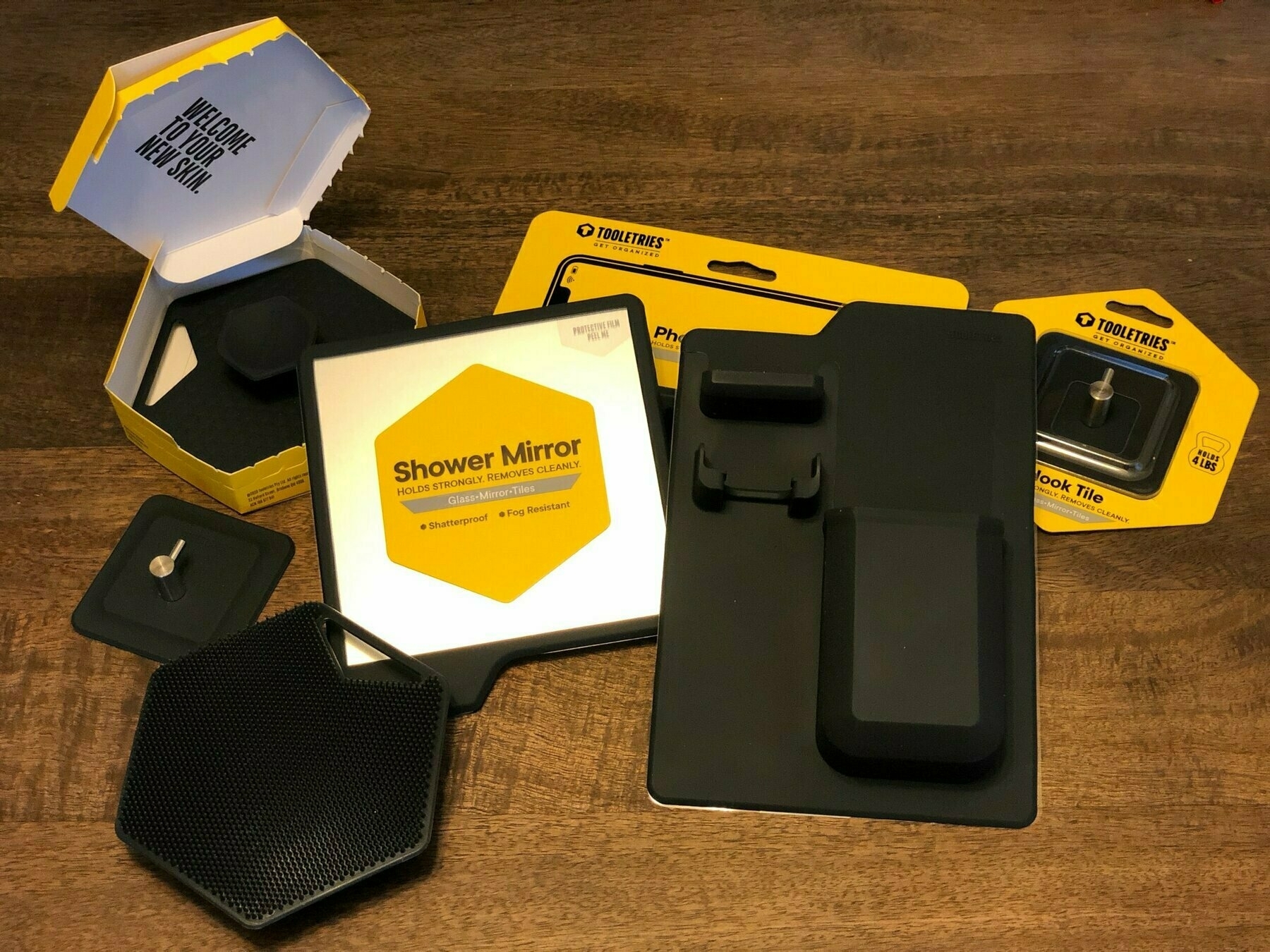
Their admittedly stale, male-oriented mantra is about believing that a bathroom is a “sanctuary” and a “place of calm and serenity… free from chaos and disorder”. Sure, I can agree with that, and I’m sure every gender could, too. What’s not stale is the design integrity behind these pieces. And whole thing doesn’t work without their 100% antibacterial silicone, extremely-adhesive sticking surface, and thoughtful design like anti-fog mirror and shelf drainage holes.
Let’s take a look at the kit I bought, and I’ll walk you through this.
Harvey & Oliver Set
Available here ➔ The Harvey and Oliver Set
I don’t shave. At least in the traditional sense. I use an electric razor on my haphazard bullshit beard, and I don’t do in the shower lest I get electrocuted. Which means this part of the kit is for my wife, who does shave, and like many, I conjecture, does it in the shower.
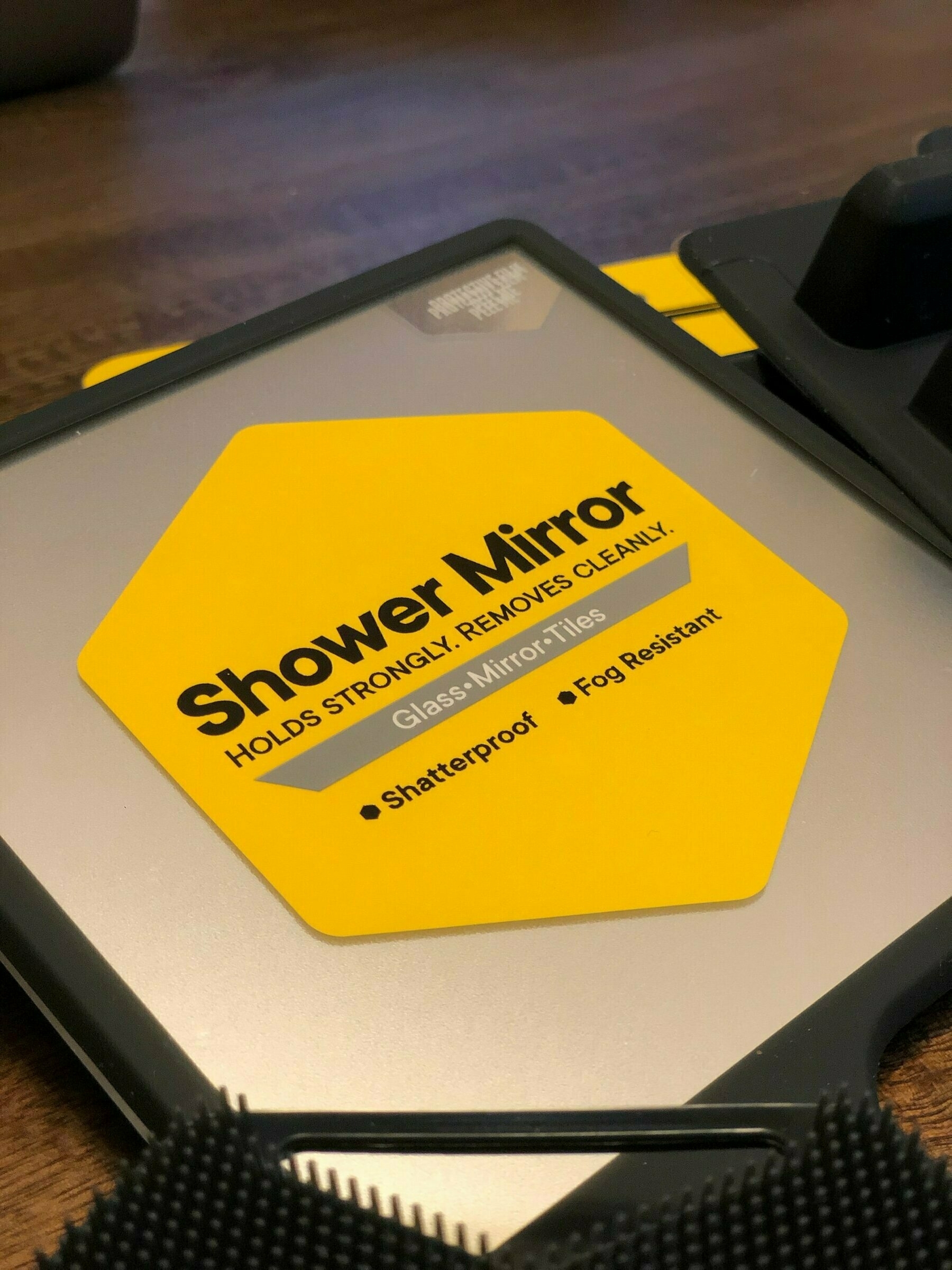
This might be the least impressive of the Tooletries items, but certainly serves a functional purpose if you need it:
It holds a traditionally-designed razor (my guess is it’ll fit 95% of them in it’s cubby drop-down holder), and also has a little rest for an extra razor, too. Which I suppose is convenient.
It also has a deep pocket for perhaps some kind of shaving cream or tube of something related to shaving or other shower antics. Honestly, it’s not a great shape, and would really only fit a 2-3oz lithe tube of liquid, nothing fatter. I’ve brushed my teeth a few times in the shower, and I’ll park my toothbrush in here between finishing and getting out. It’s about that size.
The mirror is cool. I’ve never had a mirror in a shower before, and while its use is limited (what would I honestly be doing that requires looking at myself... is extremely limited in a shower context). But, having it adds a surreal element to the daily cleanse (at least in these early stages). Maybe its use will manifest itself down the road. I don’t know. Either way, I’m keeping the fucking thing in there.
Body Scrubber & Hook
Available here ➔ - Body Scrubber and Hook
By far the most effective tool in the collection. I ordered two (one for my wife, one for me). Same two-toned options.
These things stick as well as the rest of the kit, and provide the (likely) most used component. They operate as replacements to loofahs or hand towels, whatever your previous preference in body-washing. Lather the soft-spiked surface area with body soap of any kind, and comfortably hold the joystick handle to apply the region across yourself while showering. Simple operation.

The surface area, while significantly different than a loofah’s swirly mess of fibers, does feel different at first: its areal spikes, diameter-y plane of existence is a combination of a towel and a loofah, and it makes perfect sense. Easy to rub that soap everywhere. It causes a bit of friction, which in my unprofessional observation, helps with sloughing off dead skin and priming the epidermis for some lovely cleanliness.
Phone Holder
Available here ➔ - The Phone Holder
Yeah, this was a hesitancy buy. It’s weird bringing tech into the shower, but if the acoustics of your bathroom aren’t great (how many actually are?), then listing to music or podcasts is best with the phone with you. And since many modern devices are water resistant or proof, this is an obvious choice.
Its design is hefty — never once have I felt that it wouldn’t hold my phone’s weight. Its design suggests you lay the phone horizontal along its shelf, but you can flip it up vertical. It holds either way. In our paranoia, we usually stick a little piece of TP on the camera lens, but depending on where you place the Phone Holder, superstitious prying eyes probably aren’t going to be gazing at you easily.
Anyway. This was a good addition to the core kit. Fits in nicely with the rest of the pack. Provides a nice use in the morning or evening if you’re catching up on podcasts or looking for some soothing tunes to wake or subdue you.
In Summary
I recommend the purchase(s) if you want to invest in something like this, haven’t found the right shower kit, and/or if the two-toned options match your shower aesthetic. The sticky mounts do actually work without having to permanently nail anything into surfaces that will rile up your anxiety. These pieces are functional, washable, and — hey! — movable, meaning you can constantly readjust their location. How about that. Flexibility.
➔ A lovely memoir about family, heritage, and Taco Bell.
Taco Bell was easy, and inexpensive, and it was shamelessly Mexican. Emphasis on “shameless”: its garish facsimile of an entire nation’s culture was seemingly dreamed up by the type of white person who gets drunk on tequila and wears a sombrero for comedic effect. It was still Mexican, though. In fact, it was both Mexican and American. All under one greasy roof.
Delightful to see useful, playful hardware designs again from Sony, like this portable AC unit. Not sure about practicality, but I like that they built it and released it. No fear.
Writing is thinking.
📝
Solidarity in the Twin Cities
Reading through a few recent posts from Minneapolis’ Trylon cinema blog, Perisphere, I came across this from Matt Levine, after contemplating his initial enthusiasm for having moved to the Twin Cities:
I know now this rosy view of Minneapolis was a reflection of my white privilege. I suspected as much at the time; you’d have to be severely myopic to see the way cops lingered around the intersection of Broadway and Lyndale (but ignored most kinds of drunken mayhem in Uptown) and pretend everything was okay. But I wanted to believe, in the years of Barack Obama’s presidency, that Minneapolis was a sign of where America was going: suffering from a difficult past but working towards progress, visibly unequal but trying to right those wrongs. I wanted to believe that the city’s pseudo-liberal leadership and my semi-diverse (i.e., gentrifying) neighborhood were proof that things were okay and would only get better. The ease with which I convinced myself of that weighs heavily on my shoulders, as it does for a great many white residents of Minneapolis.
He ends on a hopeful note, one that I echo from across the river in St. Paul:
And yet my pride in Minneapolis continues to grow. What I’ve seen in the aftermath are peaceful protests at which people come together, undivided by race or by attempts to stoke further animosity; they kneel or chant or march in unison because they refuse to live in a country like this. I’ve seen people converge on Lake Street or Bloomington Avenue armed only with brooms and rubber gloves and trash bags, working together to clean up the mess. I’ve seen people donate money and food and cleaning supplies and homes and vehicles, people that may have not been mobilized in the past. I’ve seen and heard a lot of traumatic things, but also neighbors who stay up all night to keep watch over their street, and business owners who would rather see their property damaged in an act of public demonstration than be complicit. Yes, I had a naïve view of Minneapolis as a blissful city that welcomed everybody, and on the political level that probably was never true; but at the street level, where so many of us are afraid and furious but still working together, that is the Minneapolis I’m seeing now.
Great reminder from Gruber on the differences between the Return and Enter keys.
Crazy times in hyper-trading
➔ Ranjan Roy on investing in a scathing piece about robot-investment firm, Robinhood:
It's mainly because, over the years, I've learned that a general rule is anytime anyone tells you about an investment, you shouldn't listen. They're most likely telling you a quarter of the full story, or they're trying to sell you some investment newsletter, or maybe some newfangled financial product, or just getting in a good old-fashion dick-swinging competition, but in investing, more than probably any other area of life, assume everyone is at least partially lying.
He harkens back to his days trading in 2009, but the principles of profit-making motives still apply today. It’s astounding how much money Robinhood makes on every dollar in a consumer’s account. And, of course, astounding how yet again a start-up sought to disrupt an industry without considering the consequences (intentional or not) through hyper-growth aims.
I really hoped this guy would have survived more than a few days after he finally bloomed, but a dual-front of bees and birds stole the thunder right out of it.
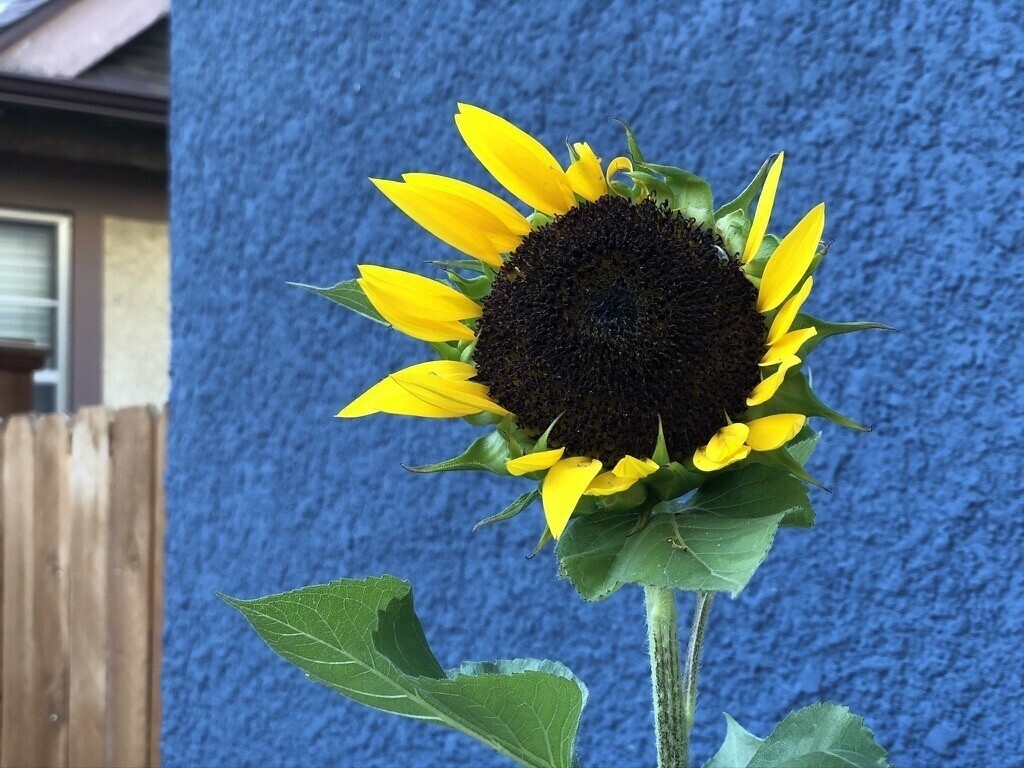
➔ Matt Mullenwag (Automattic’s CEO), interviewed in this New York Times Corner Office piece, elaborates on his point about leveling the playing field of everyone at a company via remote work scenarios:
...there’s a world of possibility that opens up when you move from the finite space of a shared office, and all the politics of dividing up the scarce resource of desirable space, to the infinite game where people can define their own “office” as the place where they will be most productive, and do so however they like with no penalties or restraints.
If you had the best space in the legacy office, you probably liked it and may even have had motivated reasoning around ineffable things that happened in the office like “culture” that would be impossible without it, but the average experience of an entry-level worker was not as positive. Now there can be a much more even playing field. At Automattic we have a home office allowance people can use to buy equipment they need to make their home work area comfortable and productive, and it’s the same if you’re leading a team of hundreds or if it’s your first job.
Having been working remote (or, as Matt is trying to formalize as better terms, distributed or decentralized) these past two years after moving to St. Paul (from Chicago), and running a team — at first remotely with mostly centrally-located teammates, then fully remote due to the pandemic — I concur with his rationale. Jason Fried (Basecamp) has leaned in this direction as well, and they’re both right about workplace environments for most computer-oriented companies: this kind of “office” scenario can be better for almost all leveled individuals at an organization, and it evens out equality of workplace environment and time bandwidth on a number of levels. Furthermore in the piece, he also details Automattic’s intriguing way of hiring (hint: all chat-based).
Nicole Cardoza schools inquisitive minds regarding AAVE (aka Ebonics):
There is no historical or grammatical grounds for entirely discrediting any type of English, let alone AAVE. In fact, correct language is relative to its time and setting, and native speakers are the ones who decide what is acceptable (JSTOR). Take the idea of double negatives, something that AAVE is often criticized for with terms like “ain’t nobody.” Those fell out of favor in the eighteenth century, but were loved by Chaucer and Shakespeare, and are critical in expressing negativity in both French and Ancient Greek (JSTOR).
The BBC has an intriguing examination of an occupied radio frequency that may or may not be used for message encoding by the Russians. It also could be a plethora of other things, leading the reader into conspiracy theory territory.
A great, 10-minute weekend read.
More on the “why” of the Lincoln Project, explained by Vox. This point is apt:
Liberals who oppose the Lincoln Project object to its core conceit: Trump, and Trumpism, are a cancer on the Republican Party, and by removing him and his ideas, things can perhaps go back to normal. In the conservative group’s mindset, Republican presidential candidates like John McCain and presidents like George W. Bush exemplified the best of American conservatism, while Trump is an aberration: a former reality show host with divorces, affairs, and affronts to “traditional morality” aplenty.
But as historian Eric Foner argued in 2016, Trump can be seen as “the logical conclusion of a lot of things the Republican Party has been doing” for decades, with predecessors like Richard Nixon’s “law and order” presidential campaign, rife with racist implications, and populist appeal as a businessman railing against Washington corruption. To many liberals, Trump isn’t an aberration; he’s the culmination of a decades-long political project.
➔ Agreed with Dave Winer on this bit:
Project Lincoln so far has been great entertainment. Good for base-rallying. They can't really get into inspiring visions, given that they are Republicans and won't be in power if the ads work.
While Project Lincoln has been savvy and entertaining, it’s unknown what their longer-term vision is for the country aside from defending “democracy”. Are they moderate Republicans? Their line has been that “those who sign onto Trumpism are a clear and present danger to the Constitution and our Republic”. But if they’re only hoping to dethrone him with a Democrat and influence more experts in a new administration, let’s hope it’s in the spirit of returning America to its values (including whatever is even left of the Republican Party), and not stymieing progressive movements forward.
Tackling Kaufman’s tome for the remainder of the summer. 📚

Linked List (First Post!)
➔ Read the New York Times Magazine interview with Charlie Kaufman, who published his first book last week (Antkind). If I were to distill the interview into one key piece, it’s this about his approach to writing:
This was one simplified understanding of who Charlie Kaufman was: He was someone who valued truth. When he detected the absence of it, it pained him. He would prefer, for example, if film critics prefaced their negative reviews by disclosing that they’d just had a fight with their spouse, or: ‘I don’t like this guy because I don’t like the way he looks.’ Because those things are true, he said. Our thoughts and feelings are true. They are facets of the world at whichever moment we attempt to describe it.
“You’d be called self-indulgent, which I am all the time,” Kaufman said. “But if it’s done in a way that’s expansive, to me it’s very interesting. Because that is what’s going on. Because it’s true.”
➔ Honest piece from RO Kwon on women choosing to be childfree (note the specific nomenclature there).
Throughout history, people without children – women, especially – have often been persecuted, mistreated, pitied, and killed for their perceived lack. In ancient Rome, a woman who hadn’t borne children could legally be divorced, and her infertility was grounds for letting a priest hit her with a piece of goat skin. (The blows were thought to help women bear children.) In Tang Dynasty China, not having a child was once again grounds for divorce. In the Middle Ages, infertility was believed to be caused by witches or Satan; worse yet, an infertile woman could be accused of being, herself, a witch. In Puritan America, it wasn’t just having no children that was suspect. Giving birth to too many children could be perilous, too, and grounds, yet again, for being condemned for a witch.
Also in the US, enslaved women were expected to have babies, and were routinely raped, their potential future children considered a slaveholder’s property. Some of the only times women without offspring have garnered respect might be when they have formally devoted their lives to a god, and to celibacy: nuns, vestal virgins.
Which brings us to a word I haven’t yet used, but which often is levied against childfree women like me: selfish. Despite everything, it’s still common to view parenting as a moral imperative, to such an extent that voluntarily childfree people can be viewed with such outsize emotions as anger and disgust. Pope Francis, a lifelong celibate, has said: “The choice not to have children is selfish. Life rejuvenates and acquires energy when it multiplies: it is enriched, not impoverished.” Such judgments might be even more available now, at a time when so much, especially including parenting, has become more difficult for so many people.
July 14, 2020
➔ Read the New York Times Magazine interview with Charlie Kaufman, who published his first book last week (Antkind). If I were to distill the interview into one key piece, it’s this about his approach to writing:
This was one simplified understanding of who Charlie Kaufman was: He was someone who valued truth. When he detected the absence of it, it pained him. He would prefer, for example, if film critics prefaced their negative reviews by disclosing that they’d just had a fight with their spouse, or: ‘I don’t like this guy because I don’t like the way he looks.’ Because those things are true, he said. Our thoughts and feelings are true. They are facets of the world at whichever moment we attempt to describe it.
“You’d be called self-indulgent, which I am all the time,” Kaufman said. “But if it’s done in a way that’s expansive, to me it’s very interesting. Because that is what’s going on. Because it’s true.”
➔ Honest piece from RO Kwon on women choosing to be childfree (note the specific nomenclature there).
Throughout history, people without children – women, especially – have often been persecuted, mistreated, pitied, and killed for their perceived lack. In ancient Rome, a woman who hadn’t borne children could legally be divorced, and her infertility was grounds for letting a priest hit her with a piece of goat skin. (The blows were thought to help women bear children.) In Tang Dynasty China, not having a child was once again grounds for divorce. In the Middle Ages, infertility was believed to be caused by witches or Satan; worse yet, an infertile woman could be accused of being, herself, a witch. In Puritan America, it wasn’t just having no children that was suspect. Giving birth to too many children could be perilous, too, and grounds, yet again, for being condemned for a witch.
Also in the US, enslaved women were expected to have babies, and were routinely raped, their potential future children considered a slaveholder’s property. Some of the only times women without offspring have garnered respect might be when they have formally devoted their lives to a god, and to celibacy: nuns, vestal virgins.
Which brings us to a word I haven’t yet used, but which often is levied against childfree women like me: selfish. Despite everything, it’s still common to view parenting as a moral imperative, to such an extent that voluntarily childfree people can be viewed with such outsize emotions as anger and disgust. Pope Francis, a lifelong celibate, has said: “The choice not to have children is selfish. Life rejuvenates and acquires energy when it multiplies: it is enriched, not impoverished.” Such judgments might be even more available now, at a time when so much, especially including parenting, has become more difficult for so many people.
Reviving RSS Via Feedbin & NetNewsWire
I had an RSS crisis a few months back, if you can call such a thing something so dire. I'd been using Fiery Feeds for a few years, particularly after they released a premium version for only $5/year that leveraged iCloud for synching feeds across iOS platforms. But I had noticed amidst all its thorough levers and themes for customization, I was using the app less and less. I still enjoyed checking my favorite authors, but something about the app just wasn’t doing it for me. Perhaps the bloated design. All the options. I don’t know, but it made me miss enjoying opening an RSS app and digging in.
Without fully going down memory lane, I’ve been using RSS feed readers since I owned my first Mac and RSS became a thing — Another one of those “design playgrounds” for developers. The first RSS client I used was NewsFire — shockingly still around for download, even though it hasn't been updated since 2009 (look at that thing, just drenched in old-school Mac OS X polish). I moved through using Google Reader as a backbone until that died in 2013. It was then onto the paid synching service Feed Wrangler, then Newsblur, then Feedbin, then Fiery Feeds, then Feedly, marauding through excellently-design apps like Unread, Reeder, and Readkit.
It wasn’t until a few months back, though, that one of the great original RSS feed readers, NetNewsWire, was back under control of Brent Simmons (its initial creator) that I dove back to using that, and recently to plunge back into paying for Feedbin. This combo just hits the right notes. NetNewsWire is built to a tee with iOS guidelines, and doesn’t veer too aggressively in experimental directions (aside from some classy full-screen reader views that use anywhere-on-the-screen long-presses for actions, which I don’t see often). Same goes for its iteration on the Mac, though as of this writing, it’s still catching up on a few features with its iOS twin.
Using Feedbin as the backbone for synching is also, still, an exceptional experience. It’s been updated since I last used it, and still exudes a level of class that few other back-end synching solutions have (or even bother to explore). It has its own apps which function just fine, too, including a Notifier app that gives you a heads up on custom-selected feeds that drop, particularly useful if you want to be alerted to infrequent writers. But one of the best features of Feedbin is its newsletter subscription ability. It provides you a randomized email address that you can use to sign up for various newsletters, and pulls them in like RSS feeds (and it works just great with RSS newsreaders that work with Feedbin). This mitigates clutter in your inbox while providing a secure, private method of subscribing to newsletters. It’s brilliant.
Anyway, RSS is a pleasure again. Like it should be. And here are some recently added feeds I've been enjoying:
Nicole Cardoza's Anti-Racist Newsletter: Daily mailer with plenty of insights and guidance on fighting systemic racism
Alex Kwa: Reviewer based in Japan, focuses solely on technical apparel typically in black
Minnesota Reformer: Subscribe through the newsletter, highlights extensive policy news across the state
Molly Young at New York Mag's Vulture: Subscribe through her newsletter; infrequent (monthly?) book recommendations that are actually good
NextDraft: No idea why it took me so long to get around to this, but Dave Pell's daily curation is a perfect evening skim.
Back to the Mac
It’s been an unusual couple of years for my computing. My primary directive from work is use to a Lenovo ThinkPad, which, admittedly, is fairly trustworthy and has been updated to Windows 10 without issue. While personally I’ve always been most comfortable with Apple products, I can get things down fairly well in Windows, albeit the company restrictions limiting by ability to customize software to my preferences.
As such, since moving up to St. Paul and being somewhat unmoored from in-office interactions (aside from near-monthly visits, which due to the COVID-19 era, have all but disappeared), I’ve moved back to using a split between my personal MacBook Pro (a late 2013 model that still runs very well), my iPhone, and my iPad Pro (first model, sans FaceID).
This system has been working well. Luckily, I am able to connect to all my enterprise accounts via the Microsoft suite of apps (Outlook, Office, et al). This did, however, require me to purchase a personal Microsoft subscription (Microsoft 365 or whatever they’re calling it now). A minor inconvenience, but it has since permitted me unrestricted usage of all their core apps across the entire Mac ecosystem. And they’re quite good.
Aside from a few finicky adjustments with the Mac version of Outlook (no docked calendar view, funky search filters), it’s a much more pleasant experience to use than the Windows 10 counterpart. Skype works just fine, Teams even better. And synchronicity between all platforms works for the most part. Skype for Business is the worst offender (inconsistent conversation threads if I’m hopping between one platform and another is annoying — Teams is way more consistent). But Microsoft’s adherence to the MacOS doctrine of user interface design is just so much more intuitive for me, and it’s native adherence to the Mac services and my preferred productivity apps is indispensable. The biggest issue I’ve run into are the restrictive policies on using my company’s instance of Box. And that’s about it.
Since my Mac is heading into 7-8 year territory, I’ve been thinking about an upgrade, and where I want to continue to invest in the future of the Apple ecosystem. Work connectivity is important, but not a dealbreaker. And up until recently, I’ve been very interested in dumping the Mac and going all-in on iOS with a fully loaded iPad Pro 2020/2021 with the new Magic Keyboard + trackpad integration. I do think iPadOS has started moving in the right direction to, down the road, ostensibly replace the Mac. But not yet.
To freshen things up a few months ago, I bought a Magic Trackpad as a mouse replacement. And for some curious reason, this minor change in Mac interaction, along with a renewed interest in RSS via the rebooted NetNewsWire + Feedbin, something clicked, and I have become ever more invested in the Mac again.
- Re-installed Launchbar (oh, I’ve missed it), hooking up several handy actions and re-memorizing those I’d forgotten.
- Finally started using Spaces correctly (e.g., directing apps to open in either a designated Work space or Personal space).
- Doubled-down on using Things as both my personal and work todo app (dropping Todoist — which I had only been using due to its inter-operability between Mac/iOS/Windows).
- Seeking a new scratchpad, I instantly bought into IconFactory’s brilliant Tot for the Mac + iOS, and have been using it exhaustively since its launch for everything from non-analogue notetaking to dropping phrases, quotes, or minor meetings note as into to later deposit into my work cache (Microsoft OneNote).
- Began writing a text adventure in Twinery, an endeavor that seems inconvenient or much more difficult on anything but a proper computer.
- Saw a great tweet by Paulo that prompted me to superpower my shortcuts in the keywords pane to initiate a ton of symbols I’ve come to rely on for use in my note-taking (yes, admittedly, something that pairs with iOS).
- Just something about multiple windows for apps instead of the full-screen malarkey. I like the idea of full screen, and sometimes shift into it, but it’s still not as productive as the original interface formula.
- And, of course, bridged a number of RSS feeds I used to follow into my Apple folder to get back into the modus operandi of Apple news and culture.
This may not seem like a dramatic change, but it has reinvigorated my interest in Mac as a comprehensive, fully-loaded platform currently to its likely long-term successor, iPadOS. My confidence in navigating its interface by keyboard or the variety of customizable gestures with the Magic Trackpad, plus the better (as of now) asset manipulation/folder/sharing infrastructure/scriptable automation, has me convinced the Mac isn’t going anywhere soon, even if Apple released Xcode and Final Cut Pro to it this year (few of the last remaining stalwarts of “Mac-only”). As it stands, the Mac is still king. And I’m glad I’ve returned to it fully.
Scenes from Grand Marais
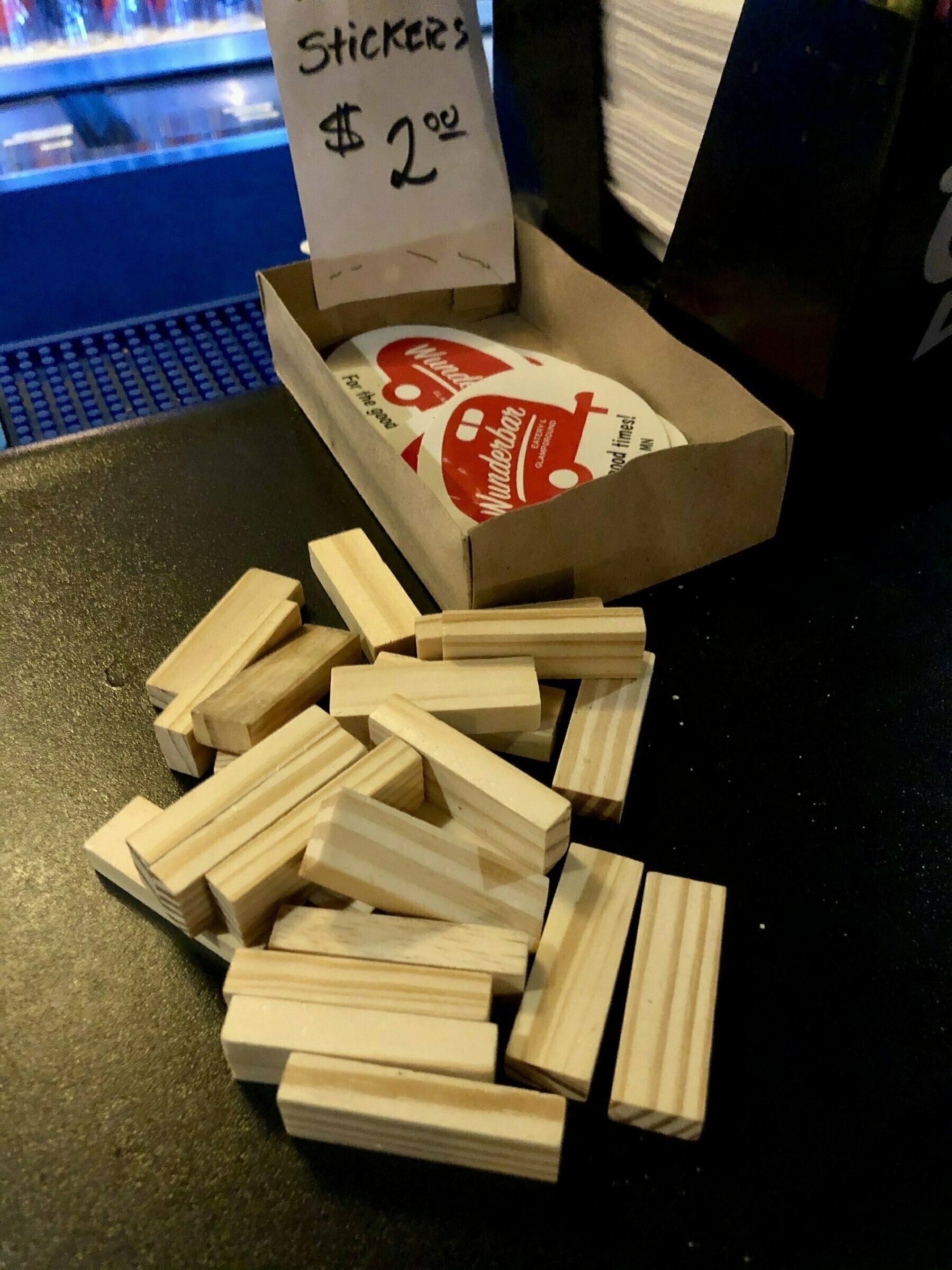
We did a pleasant jaunt up to Grand Marais for a few days, taking in the quiet small town before it braces for winter. Couple stand-out places:
Wunderbar: An earnest bar/restaurant whose campus is home to a glamp-ground with rentable tents/RVs as well. Great lighting and vibes.
Grandma Rays: Roomy dive bar. Only realized the clever play on the town’s name itself on our drive home.
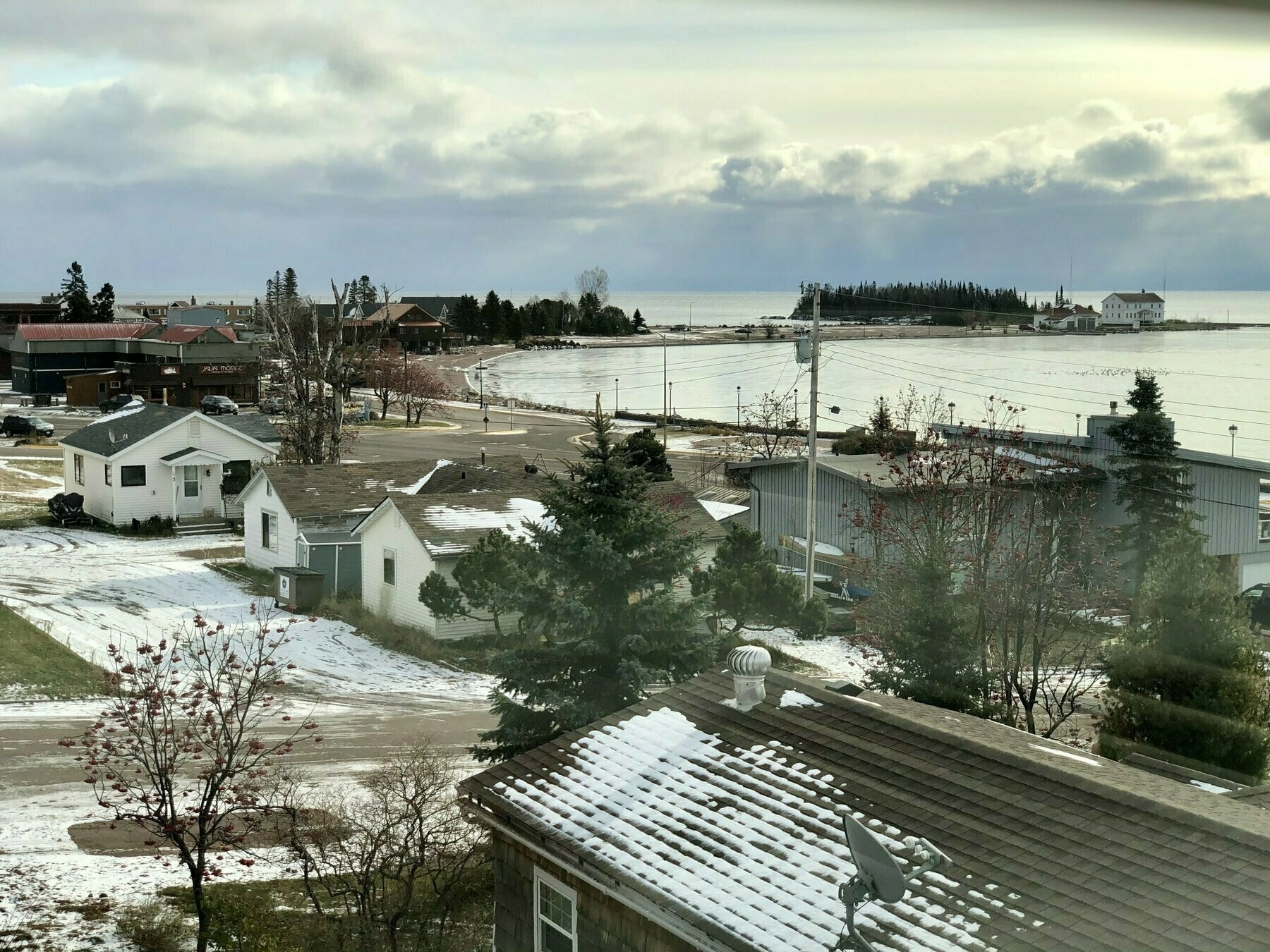
Angry Trout: A worthy lunch spot; the prepared fish over salads were great, and the soups (chowder and chili) warmed us up. Everything about the place is curated or designed with sustainably in mind.
Tre Søstre: A beautiful set of vacation rentals that directly channel Scandinavian architecture. Warm, inclusive interiors, ample views of Grand Marais via windows and balconies, and a great gas fireplace won us over.
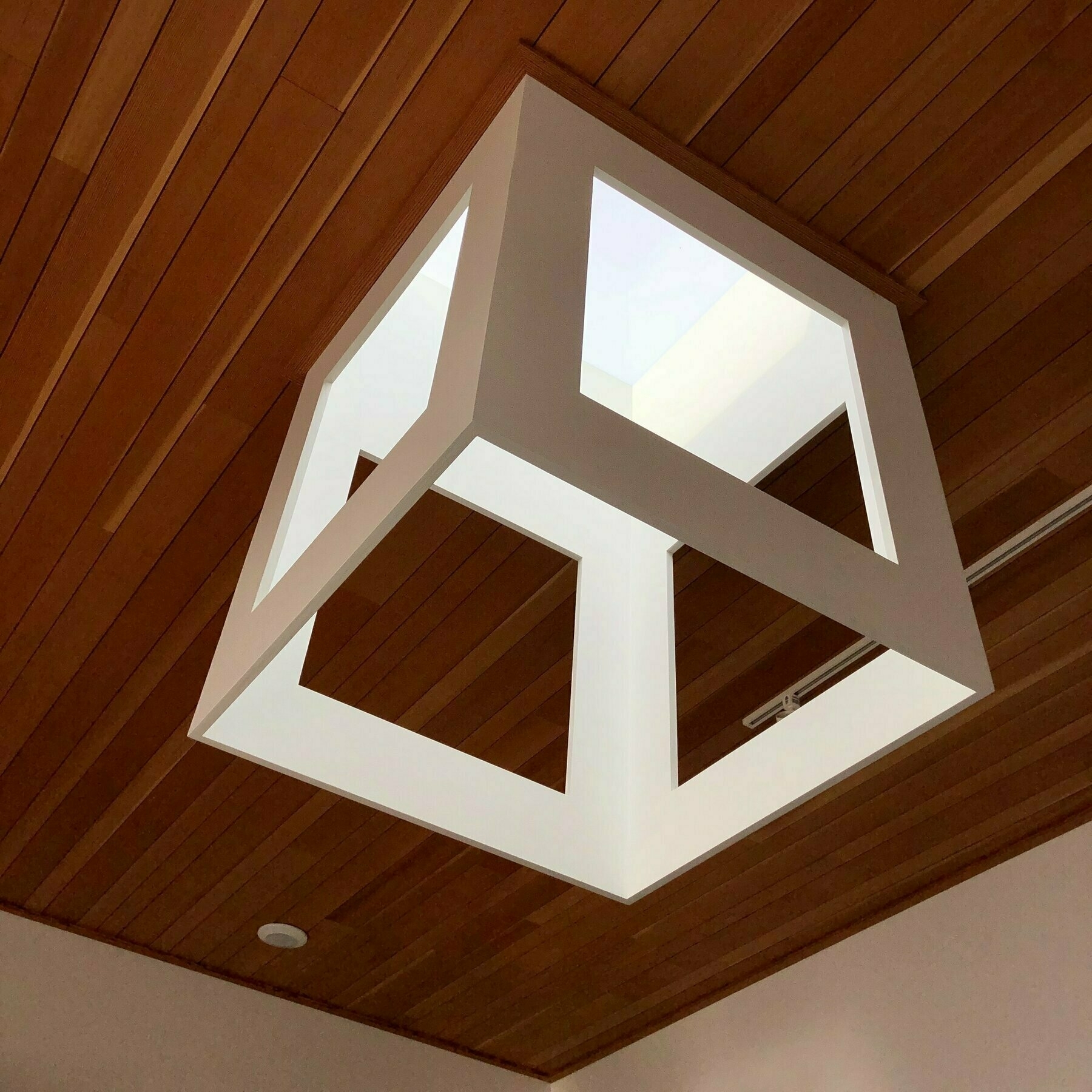
The Aer Cardholder Wallet
Been a while since I’ve tried a new wallet. After using the Trove wallet for years, a new cardholder release from Aer (a San Francisco outpost focused on sleek bags and accessories) caught my attention.
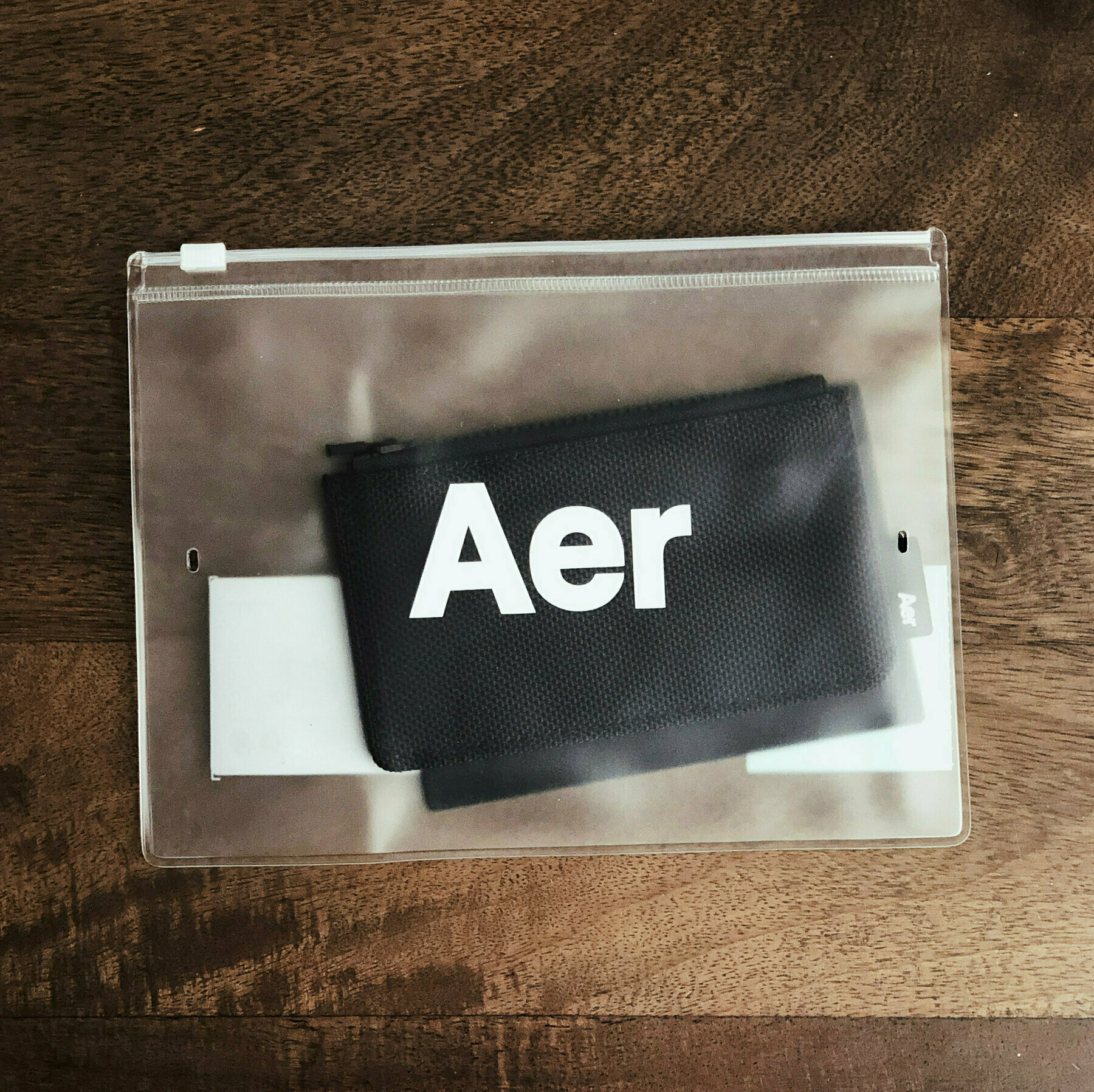
Wrought of 1680D Cordura ballistic nylon and lined with a microfiber interior, the smartphone-sized wallet is a handsome execution to both hold and look at, and functions well for day-to-day use. Several features set this apart from my default Trove:
- The wallet is larger dimensionally than the Trove (it measures 5.1” x 3” x 0.2”) vs the Trove’s lean card-sized profile
- Materials are completely different. Cordura ballistic nylon in this grade is tough and stiffer than the less-heavy duty elastic and leather combo from Trove (and many other slim/minimal wallets)
- There are three stacked card holders for easy access/common usage on on side of the wallet, which is a 'whatever' for me since I’m typically grabbing only my credit card in nearly every circumstance
- There is a YKK-zippered pocket that fits damn near everything else, including additional cards, bi-folded US cash, and keys
- This pocket is also RFID-lined, protecting against skimmers while also permitting cards in the exterior 3-slot pockets to be tappable (e.g., transit cards)
The zippered pocket, while not new to wallets (Bellroy has plenty of options with it), is phenomenally well executed here. It's small and rests almost unnoticeably against the zipline, minimizing its footprint. I’ve been so used to triple/quadruple folding US cash that it’s a great convenience not to have to anymore. And the reduction of a keychain in the summer months (sans winter coat pockets) has been terrific. My only extra daily carry aside from this wallet and my phone is the occasional car dongle when I need to drive. That’s it.
<div class="sqs-gallery-meta-container">
</div> <!-- END .sqs-gallery-meta-container -->
Overall, the card’s quality build looks like it’ll hold up. The card slots are fine, though it’s much easier to pull out the top card than the others due to the thick-stitched rims (and I do miss the Trove Swift’s pull tab, which at first seemed unnecessary but has grown into a pleasant, tactile luxury). And the zippered pocket is a welcome change — while not elegant, it stores cash, keys, and a few extra cards while keeping the entire wallet profile fairly slim. For the reduction in additional EDC needs alone (especially with limited pockets in the summer), the Aer Cardholder is recommended, and could very well replace any ultra-slim wallet you have if you’re looking for the specific benefits it brings.